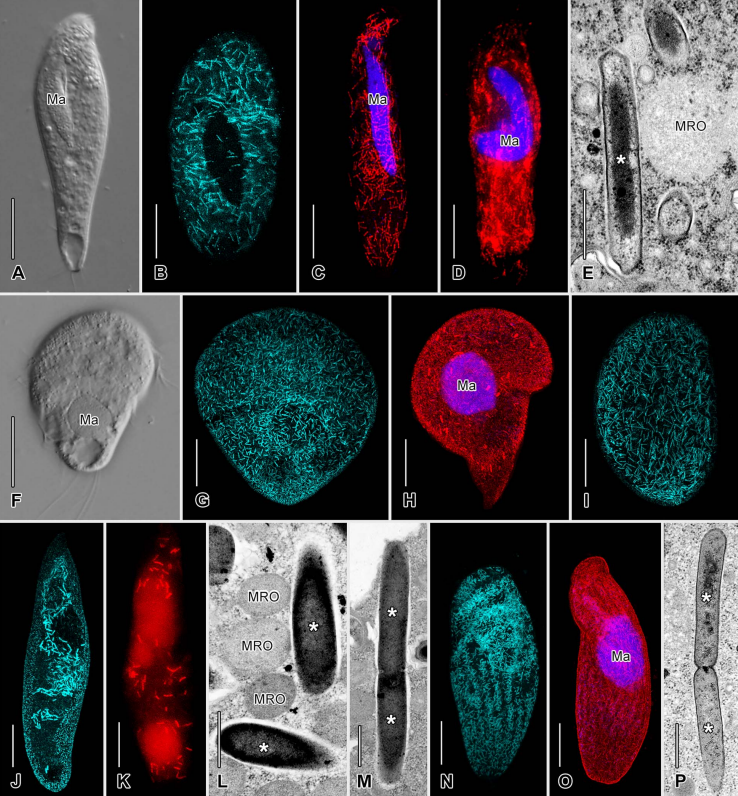A recent study has uncovered critical details about the association between anaerobic ciliates and methanogenic archaea, a relationship that has fascinated scientists for over decades. Researchers from the Faculty of Science, Charles University, and University of Rhode Island have used advanced genetic techniques and microscopy to study this relationship in 32 species of free-living anaerobic ciliates, primarily from the order Metopida. The findings highlight previously unknown patterns of host-symbiont specificity, providing groundbreaking insights into the complex interplay between these microorganisms.

A–P, Representatives of studied anaerobic ciliates and their respective methanogenic endosymbionts, for full description see the study.
The research, which utilized both Sanger and Illumina sequencing to analyze the 16S rRNA gene, revealed that each ciliate species hosts a dominant population of methanogenic symbionts, specifically from the genera Methanobacterium, Methanoregula, or Methanocorpusculum. This strong specificity suggests that the taxonomy of the host ciliate, as well as its environment—whether marine, brackish, or freshwater—plays a critical role in determining which methanogen species is present.
Furthermore, the study's innovative experimental setup involved coexisting pairs of different ciliate species, which were naturally and artificially co-cultured. Despite these artificial conditions, the researchers observed a remarkable stability in the host-methanogen relationship over short timescales, with no evidence of symbiont exchange between hosts. However, over longer evolutionary periods, the researchers found that metopids may occasionally replace their methanogenic partners.
“This study provides a clearer understanding of how anaerobic ciliates have evolved a mix transmission mode to both maintain and replace their symbionts over time,” said Ivan Čepička and Daniel Méndez-Sánchez, lead researchers on the study. “These findings help explain how these ciliates continue to thrive in oxygen-depleted environments, offering exciting new perspectives on the ecological and evolutionary mechanisms driving microbial symbiosis between prokaryotes and protists.”
This research marks a significant advance in the field of microbial ecology, shedding light on the specificity and fidelity of the anaerobic ciliate–methanogen association, while also highlighting the potential for evolutionary flexibility in these relationships.
Text is based on research article:
Méndez-Sánchez, D., Schrecengost, A., Rotterová, J., Koštířová, K., Beinart, R. A., & Čepička, I. (2024). Methanogenic symbionts of anaerobic ciliates are host and habitat specific. The ISME Journal, 18(1), wrae164.





















